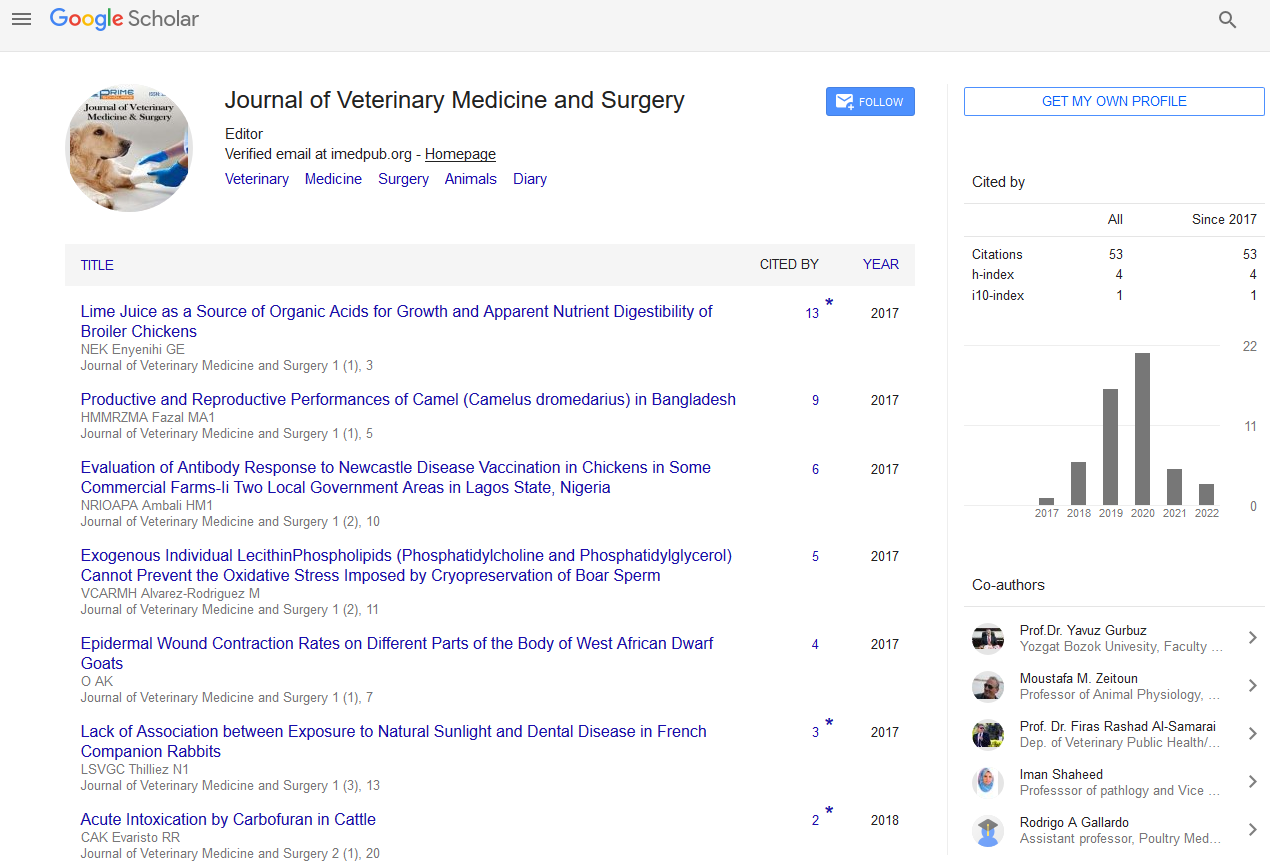Opinion - (2024) Volume 8, Issue 2
Canine Parvovirus (CPV): Understanding, Prevention, and Treatment
Alice Wanda*
Department of Veterinary Medicine, De Montfort University, UK
*Correspondence:
Alice Wanda,
Department of Veterinary Medicine, De Montfort University,
UK,
Email:
Received: 29-May-2024, Manuscript No. IPJVMS-24-20557;
Editor assigned: 31-May-2024, Pre QC No. IPJVMS-24-20557 (PQ);
Reviewed: 14-Jun-2024, QC No. IPJVMS-24-20557;
Revised: 19-Jun-2024, Manuscript No. IPJVMS-24-20557 (R);
Published:
26-Jun-2024, DOI: 10.36648/2574-2868.8.2.17
Introduction
Canine Parvovirus (CPV) is a highly contagious and potentially
fatal viral disease that affects dogs, particularly puppies. Known
for its resilience and rapid spread, CPV poses a significant
threat to canine health worldwide. This article delves into
the nature of CPV, its symptoms, transmission, prevention
strategies, and treatment options to help pet owners and
veterinary professionals better understand and combat this
deadly virus. Canine parvovirus, first identified in the 1970s,
primarily targets the gastrointestinal tract of dogs. The virus
belongs to the Parvoviridae family and is known for its ability
to withstand various environmental conditions, making it
highly resilient and difficult to eradicate. Severe Vomiting:
Persistent and often uncontrollable vomiting is a hallmark of
CPV infection. Often bloody and foul-smelling, diarrhea leads
to rapid dehydration and electrolyte imbalances. Infected dogs
typically refuse food and water, exacerbating dehydration and
weakness. Rapid weight loss occurs due to the inability to retain
and absorb nutrients. Affected dogs exhibit extreme tiredness
and reluctance to move. A high fever may be present, although
some dogs can also have a subnormal temperature. Infected
dogs often appear depressed and may isolate themselves.
In puppies, CPV can attack the heart muscles, leading to
myocarditis (inflammation of the heart) and sudden death. This
form is less common due to widespread vaccination effort.
Description
CPV is highly contagious and spreads through direct and indirect
contact with infected dogs or contaminated environments. The
virus is shed in the feces of infected dogs and can survive in the
environment for months, making it a persistent threat. Puppies
between six weeks and six months old are most susceptible
due to their developing immune systems and incomplete
vaccination schedules. Dogs that have not been vaccinated
or have not completed their vaccination series are at higher
risk. Some breeds, such as Rottweilers, Doberman Pinschers,
and American Pit Bull Terriers, are more susceptible to severe
CPV infection. Preventing CPV is crucial to protect dogs from
this deadly disease. The most effective prevention strategies
include vaccination, hygiene, and responsible pet ownership
Vaccination is the cornerstone of CPV prevention. Puppies
should receive a series of vaccinations starting at six to eight
weeks of age, with boosters every three to four weeks until
they are 16 to 20 weeks old. Adult dogs require regular booster
shots to maintain immunity. The CPV vaccine is considered a
core vaccine, meaning it is essential for all dogs regardless of
their lifestyle or environment. Regular booster shots, typically
administered every one to three years, are necessary to ensure
continued protection. Many dogs that receive prompt and
appropriate treatment recover fully and go on to live normal,
healthy lives. Dogs that recover from CPV typically develop
immunity to the virus, reducing the risk of reinfection.
Conclusion
Canine parvovirus is a serious and potentially fatal disease
that poses a significant threat to dogs, particularly puppies
and unvaccinated individuals. Understanding the symptoms,
transmission routes, prevention strategies, and treatment
options is essential for pet owners and veterinary professionals
alike. The prognosis for CPV depends on the severity of the
infection and the timeliness of treatment. With prompt and
intensive care, the survival rate can be as high as 90%. However,
without treatment, CPV has a mortality rate exceeding 90%.
Puppies and unvaccinated dogs are at the highest risk.
Acknowledgement
None.
Conflict Of Interest
None.
Citation: Wanda A (2024) Canine Parvovirus (CPV): Understanding, Prevention, and Treatment. J Veterinary Med. 8:17.
Copyright: © 2024 Wanda A. This is an open-access article distributed under the terms of the Creative Commons Attribution License, which permits unrestricted use, distribution, and reproduction in any medium, provided the original author and source are credited.

